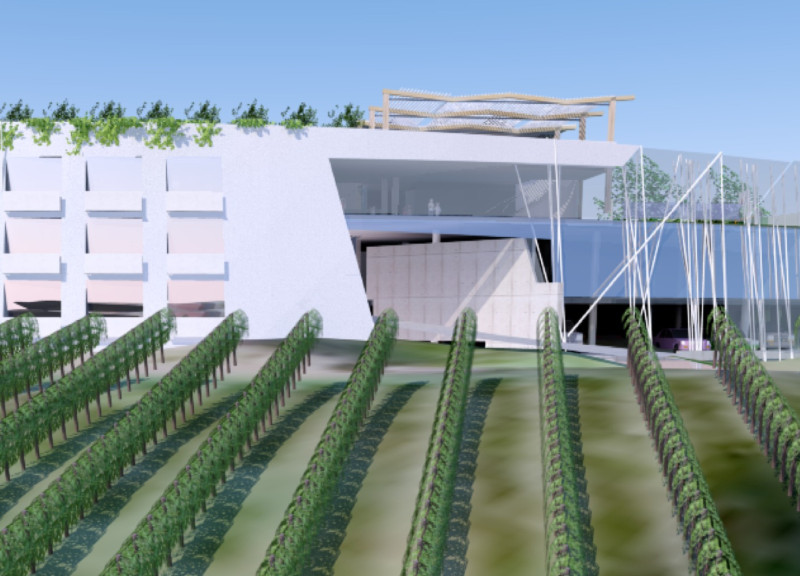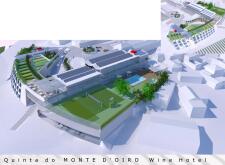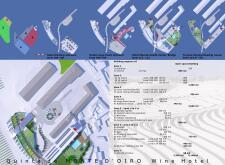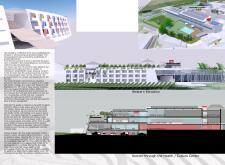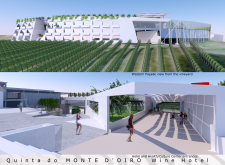5 key facts about this project
At the heart of the project is a commitment to sustainable design and environmental integration. The layout is intentionally curated to take full advantage of its surroundings, with strategic positioning that provides magnificent views of the vineyards, allowing natural light and ventilation to penetrate every corner of the structure. The hotel consists of various components that cater to diverse needs, including elegantly appointed guest rooms that prioritize comfort while offering a connection to the landscape, wellness facilities that promote health through active engagement, and versatile event spaces designed to facilitate gatherings and celebrations within an inviting atmosphere.
The architectural design is characterized by a contemporary aesthetic, where a juxtaposition of solid and void allows for both visual interest and functional performance. The exterior façades feature a soft honeycomb pattern that not only serves as a shading device but also contributes to the overall visual dynamics of the building. Large expanses of glass provide transparency and offer guests a continuous connection to the outside environment, allowing the vibrant hues of the vineyard to become a part of their experience.
In terms of materiality, the project thoughtfully incorporates elements that are both modern and locally relevant, ensuring durability while remaining contextually appropriate. Concrete forms the backbone of the structure, providing stability, while wood elements introduce warmth and a tactile quality to the interiors. Stone accents ground the design in the local landscape, celebrating the region's geological identity. Furthermore, the inclusion of advanced sustainability measures—like solar panels and rainwater harvesting systems—reflects a forward-thinking approach to resource management, underscoring a commitment to ecological responsibility.
A unique aspect of the Quinta do Monte d’Oiro Wine Hotel is the design's cohesive integration with its landscape. The terraced gardens establish a seamless transition between indoor and outdoor areas, encouraging guests to engage with the vineyard in a meaningful way. Paths meander through these gardens, leading visitors on a journey that enhances their understanding of the winemaking process while inviting them to enjoy tranquil moments amid nature. Such thoughtful landscaping emphasizes the significance of the site and reinforces the connection between the structure and its agricultural surroundings.
In summary, the Quinta do Monte d’Oiro Wine Hotel is a model of modern architectural design that successfully blends hospitality with its viticultural roots. By carefully considering the spatial organization, visual aesthetics, and sustainable practices, the project not only serves its functional purpose but also enriches the landscape it inhabits. Those interested in delving deeper into the architectural plans, sections, and unique design ideas of this project are encouraged to explore the available project presentations for a more comprehensive understanding of its nuances and innovations.


